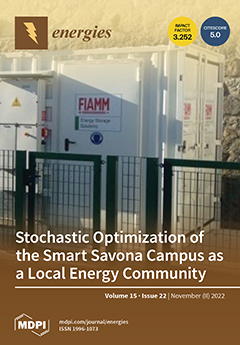The photocatalytic reduction of CO
2 into solar fuels by using semiconductor photocatalysts is one of the most promising approaches in terms of pollution control as well as renewable energy sources. One of the crucial challenges for the 21st century is the development
[...] Read more.
The photocatalytic reduction of CO
2 into solar fuels by using semiconductor photocatalysts is one of the most promising approaches in terms of pollution control as well as renewable energy sources. One of the crucial challenges for the 21st century is the development of potential photocatalysts and techniques to improve CO
2 photoreduction efficiency. TiO
2 nanotubes (TNTs) have recently attracted a great deal of research attention for their potential to convert CO
2 into useful compounds. Researchers are concentrating more on CO
2 reduction due to the rising trend in CO
2 emissions and are striving to improve the rate of CO
2 photoreduction by modifying TNTs with the appropriate configuration. In order to portray the potential applications of TNTs, it is imperative to critically evaluate recent developments in synthesis and modification methodologies and their capability to transform CO
2 into value-added chemicals. The current review provides an insightful understanding of TNT production methods, surface modification strategies used to enhance CO
2 photoreduction, and major findings from previous research, thereby revealing research gaps and upcoming challenges. Stability, reusability, and the improved performance of TNT photocatalysts under visible light as well as the selection of optimized modification methods are the identified barriers for CO
2 photoreduction into valuable products. Higher rates of efficacy and product yield can be attained by synthesizing suitable photocatalysts with addressing the limitations of TNTs and designing an optimized photoreactor in terms of the proper utilization of photocatalysts, incident lights, and the partial pressure of reactants.
Full article





